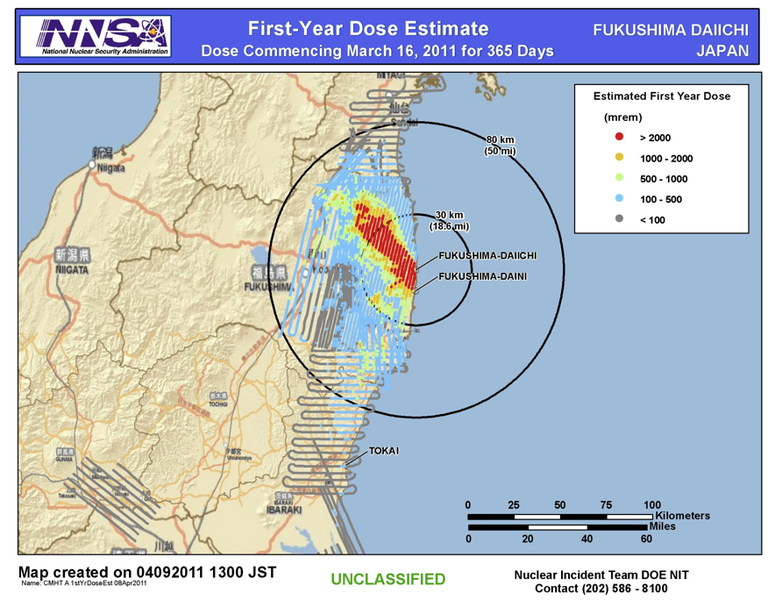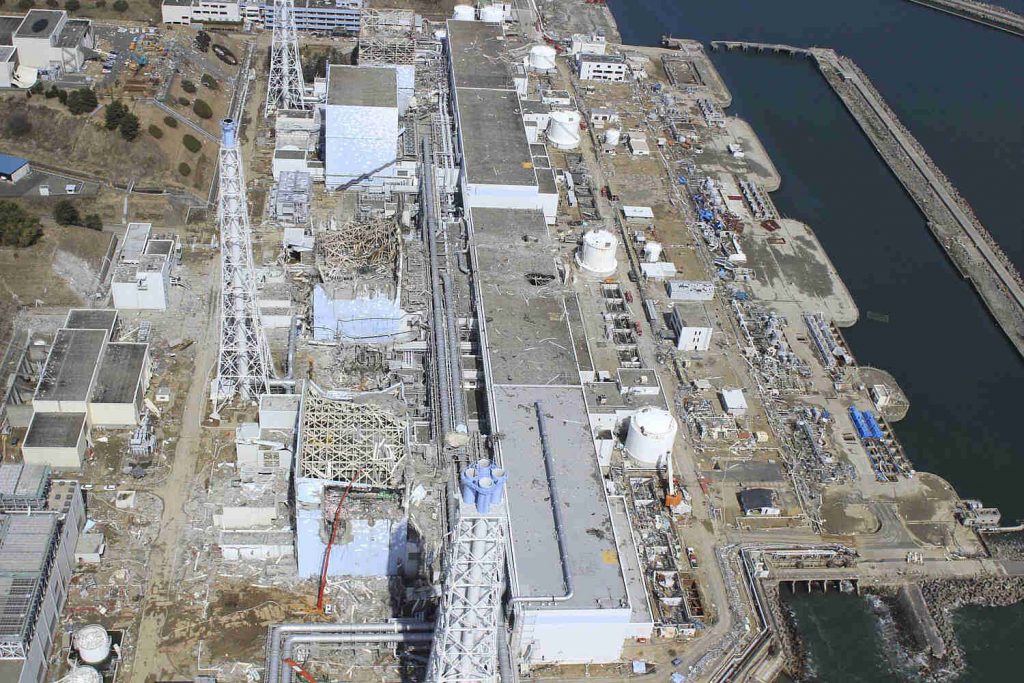What happened at Fukushima?
The Fukushima Daiichi nuclear disaster unfolded on March 11, 2011, when a powerful magnitude 9.0 earthquake struck off the coast of Japan. The earthquake triggered a massive tsunami that inundated the Fukushima Daiichi Nuclear Power Plant, located on the northeastern coast. The combined impact of the earthquake and tsunami disabled the power supply and cooling systems, leading to a catastrophic failure in three of the plant’s six reactors.
The earthquake and tsunami damaged the plant’s infrastructure, including the backup power generators and cooling systems essential for maintaining the temperature of the reactor cores. The loss of cooling capabilities resulted in the overheating and subsequent meltdown of the reactor cores in Units 1, 2, and 3. Hydrogen explosions occurred in the containment buildings, releasing radioactive materials into the atmosphere and the Pacific Ocean. The severity of the disaster led to the evacuation of nearby residents and raised international concerns about the safety of nuclear power.
The Fukushima Daiichi disaster revealed vulnerabilities in the design and safety systems of the plant. The failure of both primary and backup cooling systems, compounded by inadequate protection against extreme natural disasters, exposed the risks inherent in nuclear facilities. The interconnectedness of critical systems, combined with the unprecedented scale of the earthquake and tsunami, contributed to the inability to prevent the meltdowns and control the release of radioactive materials.
Impacts of the Fukushima Accident

The immediate impact of the Fukushima disaster was the evacuation of approximately 154,000 residents from the affected areas. The release of radioactive materials into the air and water had significant consequences for the environment and the fishing industry in the region. Long-term health effects remain a subject of ongoing study. Globally, the incident prompted a re-evaluation of nuclear energy policies, with some countries scaling back or rethinking their reliance on nuclear power.
What was learned from Fukushima?
The Fukushima Daiichi disaster prompted a comprehensive reassessment of nuclear safety practices, leading to several key lessons and regulatory changes:
Enhanced Safety Measure
The incident underscored the importance of robust safety measures, including improved reactor designs with enhanced safety features, redundant and diverse cooling systems, and strengthened containment structures to withstand extreme events.
Strengthened Emergency Preparedness
Fukushima highlighted the need for better preparation for extreme natural disasters. Regulatory bodies worldwide revised guidelines to ensure nuclear facilities are adequately equipped to handle severe earthquakes, tsunamis, and other potential threats. Emergency response plans were revamped to facilitate swift and coordinated actions during crises.
International Collaboration
The disaster emphasised the necessity for international collaboration in nuclear safety. The global community intensified efforts to share information, best practices, and lessons learned through organisations like the International Atomic Energy Agency (IAEA) and the World Association of Nuclear Operators (WANO).
Regulatory Changes
In response to Fukushima, regulatory bodies globally implemented changes in safety regulations. Stricter requirements for seismic and tsunami assessments, as well as improvements in backup power systems and cooling mechanisms, became integral parts of nuclear safety protocols.
Public Communication
Fukushima highlighted the importance of transparent and timely communication with the public during nuclear incidents. Governments and regulatory authorities now prioritise effective communication strategies and public engagement to build and maintain public trust in nuclear energy.
The Fukushima Daiichi nuclear disaster remains a pivotal event in the history of nuclear power, prompting a paradigm shift in safety practices, regulatory frameworks, and international cooperation. The lessons learned from Fukushima continue to influence the nuclear industry, emphasising the critical importance of safety, preparedness, and transparency in the pursuit of clean and sustainable energy.
Training
Training
Organisation Drift
Organisation Drift
Safety Culture
Safety Culture
Regulation
Regulation
Communication
Communication
Radiation Monitoring
Radiation Monitoring
Explore Further
Choose from the articles below to continue learning about nuclear.
Uranium – An Indispensable Part of Nuclear Energy
Nuclear Waste – Arch Nemesis of the Nuclear Industry
Lead-cooled Fast Reactor (LFR) – from Metal to Megawatts
Did you know? Explore Nuclear also offers great careers information and learning resources.
Below you can find references to the information and images used on this page.
Content References
Image References
- Fukushima Daiichi – IAEA Imagebank – CC BY-SA 2.0
- SH-60B helicopter flies over Sendai – U.S. Navy photo – Public Domain
- IAEA Experts at Fukushima – IAEA Imagebank – CC BY-SA 2.0
- Mike Weightman – IAEA Imagebank – CC BY-SA 2.0
- Fukushima Daiichi Nuclear Plant Hi-Res Photos – Digital Globe, Cryptome, Air Photo Service Co Ltd. Japan – CC BY-SA 3.0
- Fukushima Daiichi Nuclear Disaster | Coastal Processes, Hazards, and Society (psu.edu) – Public Domain

